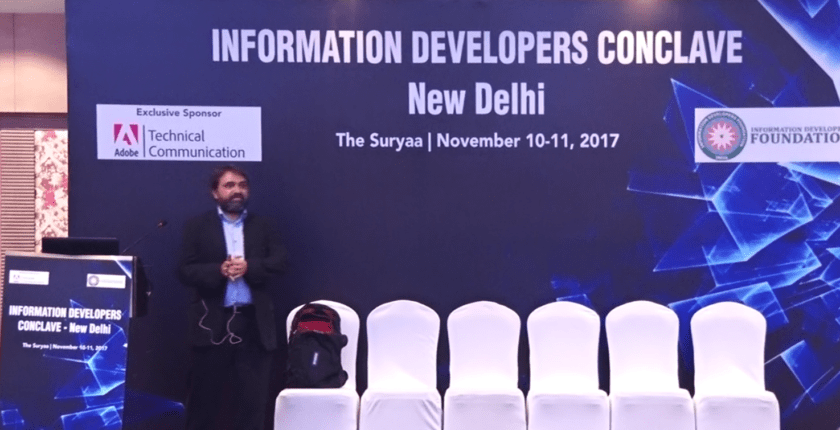Blogs
What CEO of Commit K. Narssimhan taught me in 60 minutes?
- June 13, 2018
- Posted by: Rahul Karn
- Category: Inspiration Leadership

Zen and the Art of Technical Writing- K. Narssimhan
Learning is a never-ending journey. We can learn from anything, at any time, in any state of mind.
In technical writing, there is a lot more to know apart from the technical writing itself.
Good presentation skill is one of them. You can have lots of shareable bytes in your mind but how you pass it on, is a different thing.
Make your mind free of any kind of restrictions and see the difference.
Now let me introduce you to the CEO of Commit technologies Mr. K Narssimhan. He was my first employer and a mentor to me. But, the thing that makes him stand apart from others is the learning he imparts to the audience knowingly or unknowingly.
He was a key-note speaker in the IDF Conclave 2017. His presentation on “zen and the art of technical writing” is an epic example of learning.
Everybody must have perceived differently, I am going to tell you what I learned. It was definitely more than what he was talking about.
The noticeable thing is the presentation skill and the content on technical writing that makes it a perfect blend.
Here I will discuss the basic lessons for good presentation skill and how it can improve your presence as a technical writer.
Know your Audience
Knowing the audience makes it easy for you to explain your presentation.
If the presentation is on technical writing and you know that your audience is a technical writer, you can use the technical terms and it will go well.
But if the audience is of beginners, try to refrain from technical terms, as it will surpass the brain and the audience will start losing the concentration.
The words we choose and the examples we take to explain depends much on the quality of audience.
Know the audience and present accordingly. Your presentation skill should be different for a different audience.
Have you seen Mr. Narssimhan asking the audience how many technical writers are there?
Kinetics
During a presentation not only the presentation but how it is presented matters the most.
Have you seen an audience snoozing sometimes even during a very knowledge packed session?
Our anatomy is such that when our eyes tend to see in one direction without much change of movement, it suffers from inertia.
At this phase, the attention moves from listening to let our eyes only stare at the particular thing.
Let’s take a look at Mr. Narssimhan’s presentation now.
He was not glued to the dashboard only, hence not giving the chance to the hundreds of eyes on him to stare in a single direction.
Your kinetics is also an important thing that let the audience focus on you. The movement of body parts to illustrate what you are saying creates a great impact on the listeners.
Be careful, the actions should not be more than necessary else it will give the audience a reason to laugh at you. And again this will shift the focus from the content.
Engaging Session
An effective presentation skill is the one where you engage your audience.
Do not let a parallel thought run in the listener’s mind. An interactive session works miracle to connect with the audience.
Interaction compels the audience to listen carefully to what is being said because they know that they may have to contribute randomly.
A presentation becomes more interesting when inputs come from different people, with different experiences and that too in relevance to the topic.
Before drawing the conclusion, let the inflow of queries come, it will add value to your presentation.
Humour
Adding humor creates a positive aura that makes the presentation more interesting.
Even if someone in the audience loses the attention, it brings him back to the present and generates the curiosity to know what is going on.
Humour also has a great quality of making things learn easily, be it technical writing or any other stream.
Content
Of course, it is the most vital part of any presentation. If your content is full of relevant knowledge, it will draw the attention of the seekers.
Relate the content with what you are trying to impart, the examples should be justifying, and words should be chosen carefully.
Did you draw any conclusion?
Through stories, he has conveyed what you should do as a technical writer.
He gave a beautiful example of how to motivate your team members.
Narsi explained the key to learning without prejudices, and that too through interesting stories.
You can learn technical writing when you leave the burden of what you know outside the classroom. Open your mind to let the knowledge inflow come, and stay with you.
